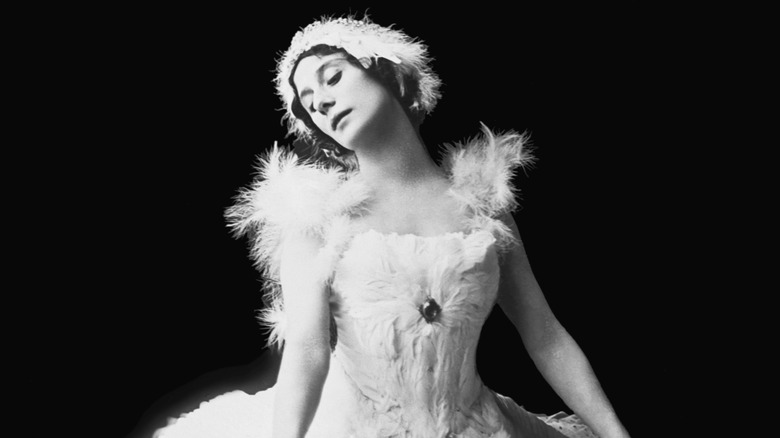The Vintage Australian Dessert Named After A Prima Ballerina
Russian ballerina Anna Pavlova, best known for her iconic role in "Swan Lake," pirouetted her way across the world, garnering admiration far and wide. This esteem manifested itself in a dessert that resembled her sophistication and grace. Pavlova, a light and airy meringue-like cake topped with fruit and cream, is named for the dancer.
It is elegant and whimsical to look upon. Baked at a low temperature, its swirls and twirls are crunchy on the exterior like meringue; yet, it's the interior that separates it from its cousin. A Pavlova is chewy and delicious like a marshmallow in the middle.
This dessert is said to have been born while the ballerina was on tour in 1926 in Australia and New Zealand. However, like the origins of pasta alla vodka or coconut cream pie, the story about the first to create the Pavlova is a little murky. The genesis of the Pavlova may have started at a hotel in Perth, Australia or at a hotel in New Zealand in the city of Wellington. But don't hang your hat on either of those possibilities, because there is research suggesting Pavlova is nothing more than a dessert that has roots in Europe and has simply evolved.
Thank the American housewife
The BBC cites culinary research from New Zealander Dr. Andrew Paul Wood and Aussie Annabelle Utrecht that reveals Pavlova has German ties in the form of a fruit torte called the Spanische Windtorte that people were eating in the 18th century. This cake was brought to America by immigrants in the 1800s, long before New Zealand or Australian chefs were beating their egg whites to create the now infamous Pavlova. In fact, the American housewife may get the nod for perfecting meringue with the addition of cornstarch.
Still, this dessert's popularity definitely took off with Anna Pavlova. She was quite the sensation when she took the stage in countries like France and America. No one was immune to her influence and, as such, there was a rash of dishes named after the prima ballerina.
Not all were desserts, though. France created a frog legs dish that the country dubbed frogs' legs à la Pavlova. Today, the Pavlova continues to evolve. Adding chocolate, lemon curd, or raspberry coulis makes this dessert different and distinct, yet still as effortless as the ballerina it is named for.

